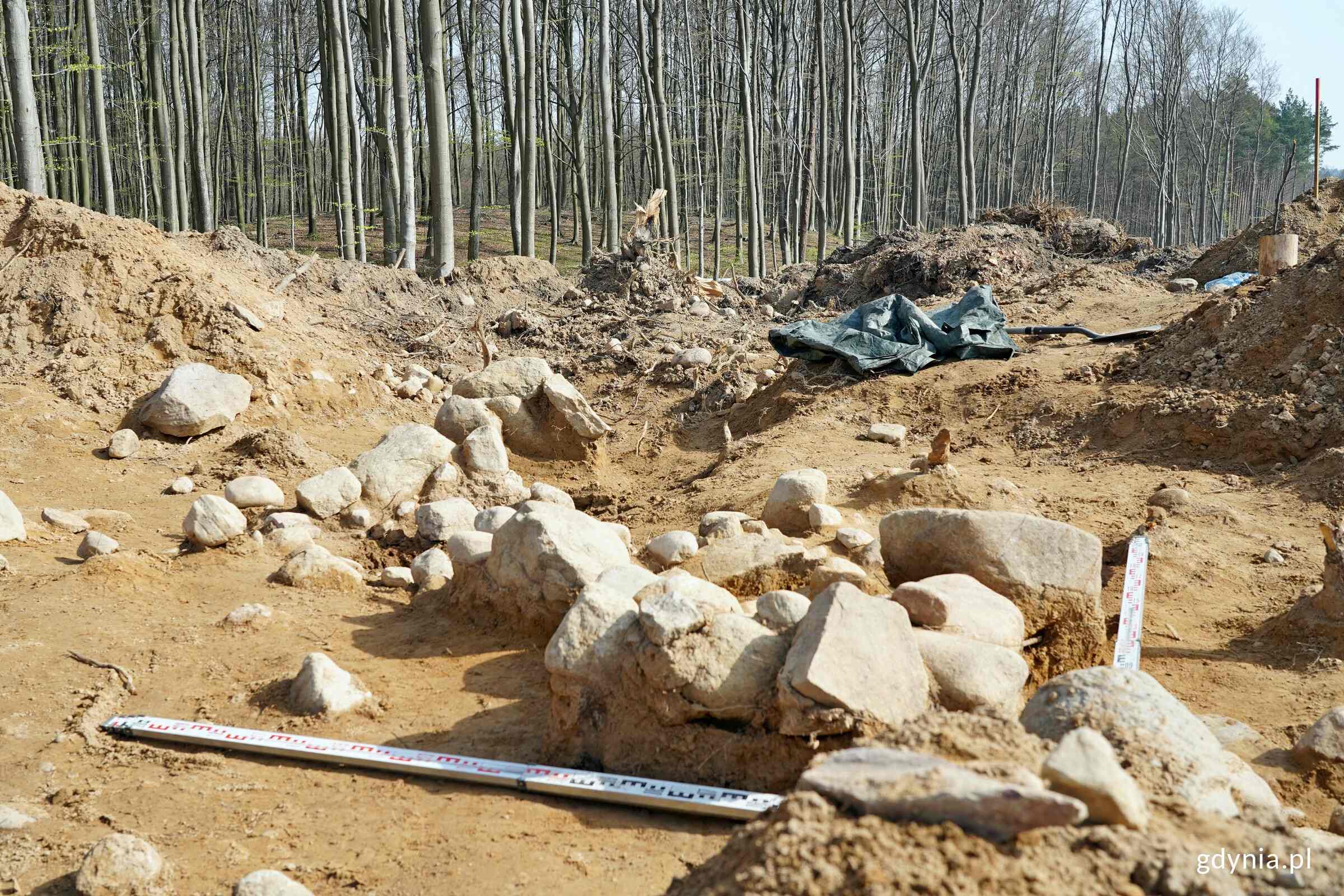

A road construction crew working on a new bypass road near the Witomino district of Gdynia in Poland has discovered a rare archaeological site containing prehistoric graves. The find, made during routine rescue excavations, includes seven graves estimated to be more than 2,500 years old.
The burial site marks the first systematic study of such structures within the city’s boundaries. Researchers say the mounds offer a rare glimpse into early human activity in the region and reflect sacred practices that spanned generations.
Archaeologists uncovered three mounds, each revealing different burial types. The site includes stone-lined cist graves and simple cremation pits. These graves are linked to the Lusatian and Pomeranian cultures, which occupied parts of modern-day Poland during the late Bronze and early Iron Ages.
In one of the mounds a stone-lined grave held a single urn burial believed to belong to the Lusatian culture, which thrived between 1300 and 500 BCE. Known for its fortified settlements and organized society, the Lusatian people commonly used urnfield cemeteries.
Above this primary grave archaeologists found a second cremation burial, suggesting that later groups reused the mound, potentially centuries apart.

The second mound contained further graves tied to the Pomeranian culture, which followed the Lusatians and was active from the 7th to 5th centuries BCE. Among the discoveries was a face urn, a clay vessel featuring stylized human facial features—a signature element of Pomeranian burial customs.
The third mound revealed more cremated remains and broken ceramic vessels. Excavations at this section are ongoing as researchers continue to study the artifacts.
Experts believe the burial site shows a long-standing spiritual connection to the land. The reuse of the same mounds by different cultures suggests the location held lasting symbolic meaning.
“The graves from different periods layered atop one another reveal a deep respect for these sites. They were seen not only as burial grounds but also as sacred spaces, perhaps linked to local beliefs about continuity and connection with the past,” said Maciej Stromski, the lead archaeologist overseeing the site.
The Lusatian culture once stretched across large parts of present-day Poland, Germany and the Czech Republic. The Pomeranian culture, which succeeded it, preserved many burial customs but introduced new symbolic forms, including anthropomorphic urns.
City authorities have temporarily halted road construction on the part of the bypass that intersects with the archaeological site and graves in Poland. Excavation work is expected to continue for another two to three weeks. The area is currently protected to prevent any damage.
Municipal officials in Gdynia have expressed full support for the archaeological work. A spokesperson said some of the most significant artifacts may be displayed in local museums or included in educational programs.
Meanwhile, road construction on other sections of the bypass, designed to ease traffic congestion, continues as planned.
